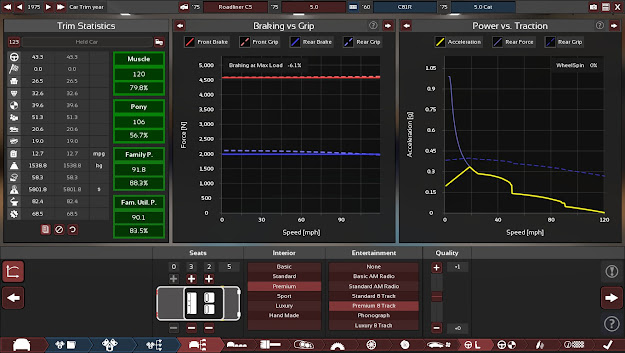Confessions of an Automationeer, Part 94: The Importance of Test Mules
Let's face it, there have been many cars entered in various Automation forum competitions over the years that looked promising on paper, but were ultimately undone by poor engineering choices. To lessen the chances of this happening, it pays to create a developmental mock-up of your vehicle, commonly referred to as a mule, as real-life car companies do when developing a new vehicle. It is generally meant to be representative of the final product not in terms of exterior design, but in mechanical specifications. As such, mules tend to either have no exterior fixtures at all, or a very basic appearance - one that is seldom representative of the final product.
With an engineering test mule, it's the trim choices, chassis options, and engine (all of which affect stats such as drivability, sportiness, comfort, prestige, safety, etc.) that matter most. Unlike styling, all three of these areas are meant to be as similar to those of the finished product as possible. Therefore, it is in these areas that the definitive car's specifications are finalized. For example, here are some screenshots of a test build I made of a mid-1970s American mid-sized sedan, in its unfinished state as an engineering mule with paint and wheels (but not fixtures) fitted.
Above, from top: Chassis and body choice for a test mule of a mid-1970s American sedan, with body style, morphs, exterior colors and wheel shape finalized, but no fixtures added to the body.
Having chosen the chassis options, along with the body shape and style, I then set about finalizing the engineering. The engine was typical of the era - a pushrod V8 strangled by a catalytic converter and regular unleaded petrol, yet still capable of developing 150 horsepower, which I deemed to be sufficient for a car of this size and type.
Above, from top: Screenshots showing an overview of the engine I chose to fit to my test mule.
Finally, here are some screenshots of each individual trim tab, showing more trim and engineering options for my test mule.
Above, from top: A series of screenshots showing various aspects of my test mule's engineering and trim.
The resulting car felt like a typical land barge of the era, albeit smaller - soft in the corners, and not very fast, but as comfortable as any separate-chassis, leaf-sprung American iron could get for its size, which pleased me very much indeed. In short, if you are unsure as to the engineering approach you want to take for a particular car, it is highly recommended to create some test mules first. Only when you are satisfied with the stats for one of them should you then develop it further.














No comments:
Post a Comment